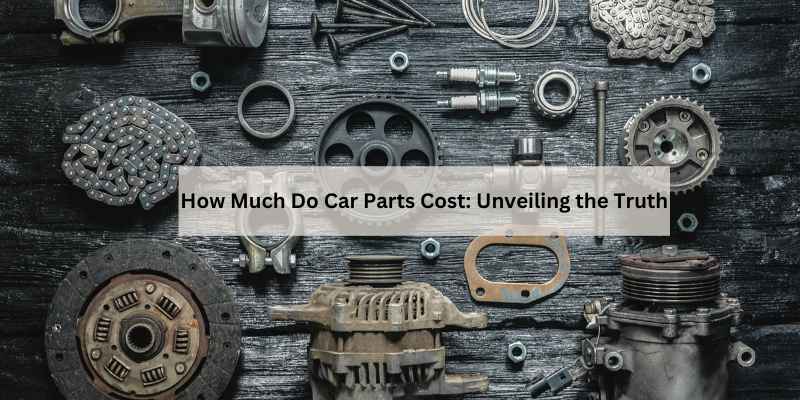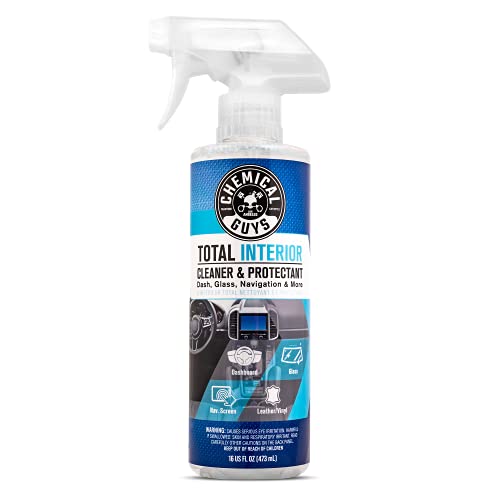How Much Do Car Parts Cost: Unveiling the Truth
Car parts cost varies greatly depending on the specific part needed. For example, the engine, being the heart of the vehicle, is the most expensive to replace due to its critical function and complexity.
Factors such as the type of vehicle, brand, and quality of the part also influence the cost. Additionally, labor charges for installation can significantly impact the overall expense. Understanding the average cost of car parts can help car owners budget and plan for maintenance and repairs.
It’s important to consider both the cost of the part itself and the associated labor costs when estimating the total expense of car repairs.
The Real Price Of Car Parts
Car parts can vary widely in cost, with some being surprisingly expensive to replace. Factors such as the complexity of the vehicle, new materials, and shortages can all contribute to the rising prices. The engine, for example, is one of the most expensive parts to repair or replace due to its crucial role in powering the vehicle.
Key Factors Influencing Costs
When it comes to the real price of car parts, there are several key factors that influence the cost. The first factor is the type of car part you need. Some car parts, such as the engine and transmission, are more expensive than others, such as air filters and windshield wipers. The second factor is the make and model of your car. Some cars require specialized parts that are more expensive than the parts for other cars. The third factor is the quality of the parts you choose. Higher quality parts may cost more upfront but can save you money in the long run by lasting longer and requiring less maintenance.
Comparing Oem Vs. Aftermarket Pricing
Another factor to consider when looking at the real price of car parts is whether to purchase OEM (original equipment manufacturer) or aftermarket parts. OEM parts are made by the same manufacturer that made the parts for your car originally, while aftermarket parts are made by a third-party manufacturer. OEM parts are generally more expensive than aftermarket parts, but they are also of higher quality and come with a warranty. Aftermarket parts, on the other hand, are less expensive but may not fit or function as well as OEM parts.
To get the best value for your money, it’s important to consider all of these factors when purchasing car parts. Compare prices and quality between OEM and aftermarket parts, and don’t forget to factor in the cost of installation if you’re not doing the work yourself. By doing your research and making an informed decision, you can save money on car parts without sacrificing quality.
Costliest Car Components
The engine is often the costliest car component to replace due to its vital role in converting fuel to power. Car parts are becoming more expensive overall due to factors like complex vehicle designs, new materials, and supply shortages, driving up repair costs.
The Engine: A Financial Overview
The heart of your vehicle, the engine, powers your car and is the costliest component to replace or repair. It converts fuel to power for movement, making it a critical and expensive part.
Transmission Expenses
The transmission system is crucial for shifting gears and transferring power from the engine to the wheels. Repairs or replacements can be significant expenses due to the complexity and importance of this component.
Hybrid And Electric Vehicle Batteries
Hybrid and electric vehicle batteries are advanced and expensive components that store and deliver power. The cost of replacing these high-tech batteries can be substantial, impacting the overall maintenance expenses of these eco-friendly vehicles.
Frequent Replacements And Their Costs
Keeping a car in top condition involves frequent replacements of essential parts to ensure safety and performance. These replacements come with their own costs, and being aware of them can help you plan and budget effectively.
Tire Replacement Economics
Tire replacement is a recurring expense that every car owner needs to consider. The cost of new tires varies depending on the brand, size, and type of tire, with prices typically ranging from $50 to $200 per tire. For a standard sedan, a full set of four tires can cost anywhere from $200 to $800.
Brake Pads: A Recurring Expense
Regular replacement of brake pads is crucial for maintaining safe braking performance. On average, the cost of replacing brake pads can range from $100 to $300 for a complete set, depending on the vehicle make and model. Premium or performance brake pads may incur higher costs.
The Price Of Keeping Filters Fresh
Air and oil filter replacements are necessary to keep the engine running smoothly. The cost of engine air filters typically ranges from $15 to $50, while cabin air filters can cost between $20 and $50. Oil filters are generally priced between $5 and $15. It’s important to replace these filters regularly to ensure optimal engine performance and air quality inside the vehicle.
Economic Insights On Bulk Purchases
Gain economic insights on bulk purchases when considering car parts costs. Understand how volume discounts impact overall expenses.
In the realm of car parts, bulk purchases can offer economic advantages that are worth considering. Whether you are a professional mechanic or a car enthusiast, buying car parts in bulk can be a smart financial move. Let’s delve into the economic insights on bulk purchases and uncover the potential benefits.
The Markup Mystery

When it comes to purchasing car parts, understanding the markup mystery is crucial. Many consumers are unaware that individual car parts can be marked up significantly when purchased separately. However, buying in bulk can often lead to substantial cost savings. This is because suppliers are more inclined to offer discounted rates for larger quantity orders, allowing you to benefit from lower unit costs.
Building A Car From Scratch Vs. Buying Whole
Building a car from scratch involves sourcing all the necessary parts individually, which can be a time-consuming and costly endeavor. On the other hand, purchasing a whole car provides the advantage of obtaining a comprehensive set of parts in one go. However, if you are looking to customize or upgrade specific components, buying car parts in bulk can be a more cost-effective solution. It allows you to tailor the selection to your preferences while enjoying the financial benefits of bulk purchasing.
Average Annual Expenditure On Car Parts
When it comes to maintaining a vehicle, the cost of car parts is a significant consideration for car owners. Understanding the average annual expenditure on car parts can provide valuable insights into the overall cost of vehicle ownership. Let’s delve into the average annual expenditure on car parts by car make, car model, and service type.
By Car Make
Car make plays a crucial role in determining the average annual expenditure on car parts. Different car manufacturers may have varying prices for their parts due to factors such as brand reputation and availability of aftermarket options.
By Car Model
The car model also influences the average annual expenditure on car parts. Newer models may have higher costs due to the availability of specialized components, while older models might have higher prices due to limited availability of certain parts.
By Service Type
The type of service required can impact the average annual expenditure on car parts. Routine maintenance such as oil changes and filter replacements may have lower costs compared to major repairs such as engine or transmission overhauls.
Why Car Parts Prices Vary
The cost of car parts can vary significantly depending on several factors. Understanding why car parts prices vary can help car owners make informed decisions when it comes to vehicle repairs and maintenance.
Geographical Price Differences
Car parts prices can differ based on the geographical location. Factors such as local taxes, import tariffs, and distribution costs can impact the overall price of car parts in different regions. For example, the cost of the same car part may be higher in urban areas compared to rural areas due to higher operating expenses for suppliers and retailers.
Dealer Vs. Local Shop: A Cost Comparison
When it comes to purchasing car parts, there is often a price discrepancy between dealerships and local auto shops. Dealerships typically offer original equipment manufacturer (OEM) parts, which are specifically designed for a particular vehicle make and model. While these parts may come at a premium, they are known for their quality and compatibility. On the other hand, local auto shops may offer aftermarket parts that are produced by third-party manufacturers. These parts are often more affordable but may vary in terms of quality and fit.
Navigating Car Repair Estimates
Understanding car repair estimates can be a daunting task, especially with the variability in costs for different car parts. It’s essential to have a grasp of how these estimates are determined to make informed decisions when it comes to vehicle repairs.
Understanding Estimator Tools
Estimator tools are used by mechanics to calculate the cost of car repairs based on the required parts and labor. These tools consider factors such as the make and model of the vehicle, the complexity of the repair, and the cost of the replacement parts.
The Impact Of Car Brand On Repair Costs
The brand of your car can significantly impact the cost of repairs. Luxury brands often have higher repair costs due to the premium pricing of their parts. On the other hand, popular mainstream brands may have more affordable replacement parts available in the market.
DIY Versus Professional Repairs
Comparing DIY versus professional repairs, understanding the cost of car parts is crucial. Engine components tend to be the most expensive to replace due to their critical role in vehicle functionality and the complexity of the part. Factors like material quality and labor also impact car part costs significantly.
Calculating The Cost-benefit
DIY repairs can be a great way to save money on car repairs, but it’s important to weigh the cost-benefit of doing it yourself versus hiring a professional. If you have experience working on cars and the necessary tools, you may be able to save money by doing the repairs yourself. However, if you don’t have the skills or experience, attempting to do the repairs yourself could end up costing you more in the long run, especially if you damage other parts of your car in the process.
Warranty Implications And Considerations
Another important factor to consider when deciding whether to do DIY repairs or hire a professional is your car’s warranty. If your car is still under warranty, attempting to do repairs yourself could void the warranty, leaving you on the hook for any future repairs or replacements. Additionally, some car manufacturers require that repairs and replacements be done by certified professionals in order to maintain the warranty. Be sure to check your car’s warranty before attempting any repairs yourself.
Overall, the decision to do DIY repairs or hire a professional will depend on a variety of factors, including your experience, skill level, and the type of repair needed. While DIY repairs can be a great way to save money, it’s important to weigh the potential costs and benefits before deciding which route to take.

Frequently Asked Questions
What’s The Most Expensive Part Of A Car?
The engine is the most expensive part of a car, serving as the vehicle’s heart and converting fuel into power for movement.
What Is The Average Amount Of Parts On A Car?
The average car consists of thousands of parts, ranging from 30,000 to 100,000, depending on the car model and complexity.
Why Are Car Parts Expensive?
Car parts are expensive due to several reasons such as heavier and more complex vehicles, new materials and manufacturing methods, a shortage of skilled technicians, and pandemic-induced supply shortages. The most expensive car part to replace and repair is the engine because it is considered the heart of a vehicle.
Additionally, repair shops charge more for parts compared to auto parts stores due to higher overhead costs.
Why Are Auto Parts So Cheap?
Auto parts are cheap due to lower overhead costs at auto parts stores compared to repair shops.
Conclusion
Understanding the cost of car parts is essential for budgeting repairs. Factors like complexity and scarcity impact prices. Keep maintenance in mind to avoid unexpected expenses. Shop around for the best deals on quality parts to save money in the long run.







